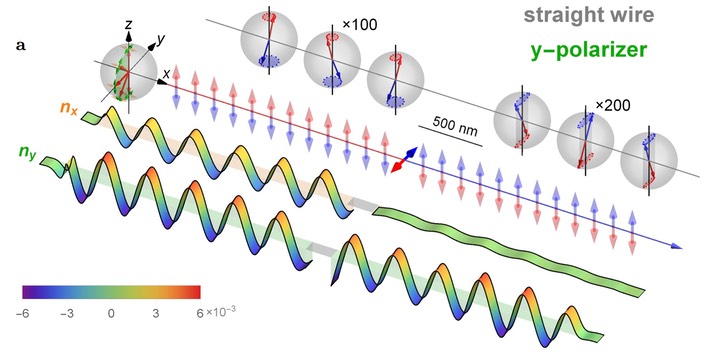Jin and Weichao had their third joint paper on manipulating spin wave polarizations using antiferromagnetic doamin walls. This paper is recently published on Nature Communications (link).
In this paper, we extend our explorations on novel spin wave devices to functional units that harness the polarization degree of freedom of spin waves. We proposed that the antiferromagnetic domain wall can act as a spin wave polarizer and a spin wave retarder --- two basic polarization manipulation components, thus realizes the full control of the polarization degree of freedom of spin waves, mimicking their optical counterparts.
Spintronics extends the physical limit of conventional electronics by harnessing the electronic spin, another intrinsic degree of freedom of an electron besides its charge. Similar to the intrinsic spin property of elementary particles, polarization is an intrinsic property of wave-like (quasi-)particles such as photons, phonons, and magnons. It is more natural to encode information in the polarization degree of freedom than other degrees of freedom such as amplitude or phase. Antiferromagnets, with two opposite magnetic sublattices, have the full polarization degree of freedom of spin waves, therefore it is straightforward to use antiferromagnets as the magnonic platform in manipulating spin wave polarization.
Making use of the Dzyaloshiskii-Moriya interaction widely existing in magnetic materials with broken inversion symmetry, we found that the spin wave in one linear polarization direction (x-polarization) is subject to an additional effective potential barrier. As a result, at low frequencies, the y-polarization experiences no (or little) reflection but the x-polarization hits a potential barrier and is strongly reflected, i.e. the antiferromagnetic domain wall works as a spin wave polarizer, as shown below; At higher frequencies, however, both polarizations transmit almost perfectly but with a relative phase delay, i.e. the antiferromagnetic domain wall works as the spin wave retarder.

This work demonstrates once again that the simple magnetic texture can have rich manipulating power, which ultimately may lead to rewritable and evovable magnetic texture based spin wave computing.
Dr. Jin Lan, Mr. Weicaho Yu share equal contribution to this work.
